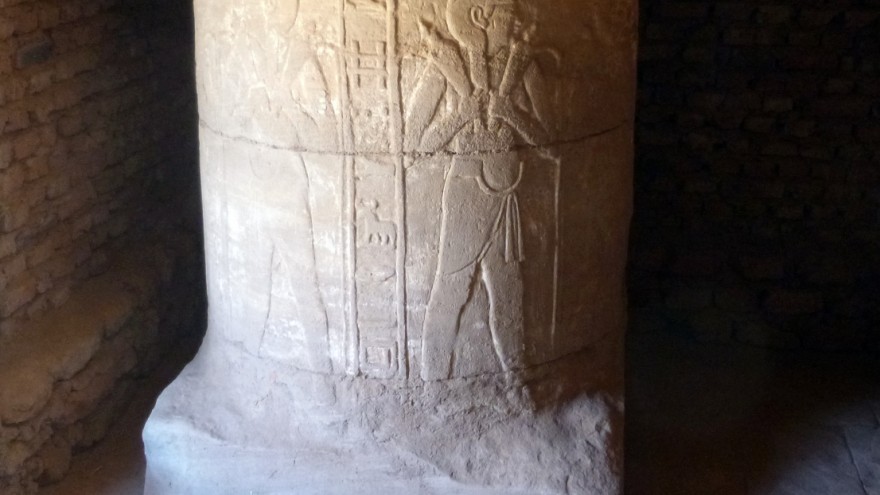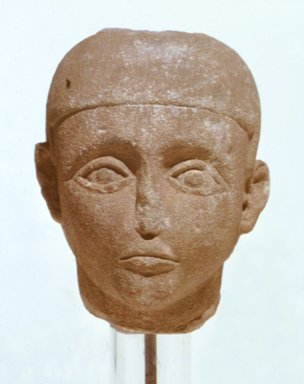I'm back on my game and that is discussing Ancient African(and diaspora) history. I feel this thread is long overdue and I've been planning a thread like this for the longest. Though for some reason i never had the time to outline everything. Anyways, it is here... In this episode of "Lets Talk African History" we talk about the civilizations and people south of Ancient Kemet on the Nile Valley and those people being the "Nubians."
To me the Nubians get outshined by Ancient Kemet due to Ancient Kemet obviously being the more popular of the two. Mainly by racist Eurocentrics. And then we have the fact that the Ancient Egyptians always tried to downplay their enemies/rivals. The people of Nubia were definitely a big rival of Ancient Kemet and actually a SECOND power on the Nile Valley which many don't know. But that is also why the Ancient Egyptians tried their best to make their Nubian enemies seem inferior in ancient historical accounts.
But most credible scholars and historians know that is not the case. When we have this old, but very interesting article on how the Ancient Nubians almost destroyed Kemet!
ANCIENT Egyptians “airbrushed” out of history one of their most humiliating defeats in battle, academics believe. In what the British Museum described as the discovery of a lifetime, a 3,500-year-old inscription shows that the Sudanese kingdom of Kush came close to destroying its northern neighbour.
The revelation is contained in 22 lines of sophisticated hieroglyphics deciphered by Egyptologists from the British Museum and Egypt after their discovery in February in a richly decorated tomb at El Kab, near Thebes, in Upper Egypt.
Vivian Davies, Keeper of the museum’s Department of Ancient Egypt and Sudan, said: “In many ways this is the discovery of a lifetime, one that changes the textbooks. We’re absolutely staggered by it.”
The inscription details previously unknown important battles unprecedented “since the time of the god” — the beginning of time. Experts now believe that the humiliation of defeat was one that the Ancient Egyptians preferred to omit from their historical accounts.
Contemporary Egyptian descriptions had led historians to assume that the kingdom of Kush was a weak and barbaric neighbouring state for hundreds of years, although it boasted a complex society with vast resources of gold dominating the principal trade routes into the heart of Africa. It did eventually conquer Egypt, in the 8th century BC.
Mr Davies, who headed the joint British Museum and Egyptian archaeological team, said: “Now it is clear that Kush was a superpower which had the capacity to invade Egypt. It was a huge invasion, one that stirred up the entire region, a momentous event that is previously undocumented.
“They swept over the mountains, over the Nile, without limit. This is the first time we’ve got evidence. Far from Egypt being the supreme power of the Nile Valley, clearly Kush was at that time."
“Had they stayed to occupy Egypt, the Kushytes might have eliminated it. That’s how close Egypt came to extinction. But the Egyptians were resilient enough to survive, and shortly afterwards inaugurated the great imperial age known as the New Kingdom.
The Kushytes weren’t interested in occupation. They went raiding for precious objects, a symbol of domination. They did a lot of damage.”
The inscription was found between two internal chambers in a rock-cut tomb that was covered in soot and dirt. It appeared gradually as the grime was removed. The tomb belonged to Sobeknakht, a Governor of El Kab, an important provincial capital during the latter part of the 17th Dynasty (about 1575-1550BC).
The text takes the form of an address to the living by Sobeknakht: “Listen you, who are alive upon earth . . . Kush came . . . aroused along his length, he having stirred up the tribes of Wawat . . . the land of Punt and the Medjaw. . .” It describes the decisive role played by “the might of the great one, Nekhbet”, the vulture-goddess of El Kab, as “strong of heart against the Nubians, who were burnt through fire”, while the “chief of the nomads fell through the blast of her flame”.
The discovery explains why Egyptian treasures, including statues, stelae and an elegant alabaster vessel found in the royal tomb at Kerma, were buried in Kushyte tombs: they were war trophies.
Kush was a vast territory spanning modern-day northern Sudan. Ruled by kings who were buried with large quantities of luxury goods, including jewellery and inlaid furniture, it had complex political and religious institutions.
The economy was based on trading in ivory, ebony and incense, as well as slaves. Its skilled craftsmen left behind some of the finest ceramics produced in the ancient world.
The independent kingdom of Kush arose during the 8th century BC. The native kings laid claim to the Egyptian throne, declaring themselves the true heirs of Thutmose III and other great pharaonic ancestors. Under the leadership of King Piye (c747-716BC), they conquered Egypt, ruling as its 25th Dynasty.
The reign of King Taharqo (690-664BC) was a high point of the Kushyte empire. He erected imposing temples, shrines and statues throughout the Nile Valley. His pyramid, the largest of the Kushyte examples, soared to more than 48m.
Over 4,000 years interaction between the empires was inevitable. While they had different funerary practices at the time of the El Kab inscription — the Egyptians had tombs and pyramids while the Kushytes preferred tumuli (grave mounds) — the Kushytes went on to build pyramids and mummify their dead.
In return, the Egyptians were particularly influenced by Kushyte jewellery design. —Times Online
Tomb reveals Ancient Egypts humiliating secret | The Times
Explain why the Ancient Egyptians hated SOME Nubians. This article debunks the myth that people of Nubia were always at the mercy of the Egyptians. It clearly shows that they were a rivaling power on the Nile Valley that was a threat to Ancient Kemet.
Anyways, getting to the point why I said "some" Nubians. And I want to make this very clear, many people inducing laymen, Eurocentrics, Egyptologist and even supposed "Afrocentrics." Make the very silly mistake of thinking that there was one "Nubian people." No such group of people ever existed! Yes they were called many different names like "Ethiopians", but again they were just the many ethnic groups that lived south of Ancient Kemet and they had their OWN cultures and OWN phenotypes! Even in modern day Sudan(including the south) we see a great diversity of many African groups.
The many Nubians included the Medjay, Puntis, Wawat and many others. But the ones we know the most and associate with "Nubian" would be the Kushytes.
What MANY don't realize is that "Nubians" like the Medjay were actually allied with the Ancient Egyptians against other Nubians like the Kushytes and the Hyksos! I remember someone on another forum posting something very good that stated the invading Hyksos of the Delta tried to make a deal with the Kushytes to divide Egypt between the two of them.
The deal would make it so that Lower Egypt would be under Hyksos rule and Upper Kemet under Kushyte rule. However one of the kings of the 17th dynasty intercepted the Hyksos message and organized a full scale strike from Upper Kemet to attack the Hyksos. Once Upper Kemet was united it didn't take long for their Lower Egyptian counterparts to unite and join forces to drive out the Hyksos.
How was Kemet able to succumb Kush? The poster said once they defeated the Hyksos, they were able to acquire their technology namely, the horse and chariot along with the composite bow and improved war axes. All of this gave the Egyptians the advantage they needed over the Kushytes, although another significant factor were the
Medjay. Medjay or at least most of their tribes allied themselves to the 17th dynasty and no longer Kush. Anyways, by the end of the 17th dynasty the Egyptians were NOT disadvantaged but on the opposite... They had every advantage to GET BACK at the Kushytes...
So we have TWICE that the Kushytes came close to destroying Kemet.

And this would be why the Egyptians would built southern fortification on the southern border.

But getting back to how Nubian people were different. Many Egyptologist and Euroclowns making seem like Nubians were the "blacks" while the Egyptians were the "mixed" or more "jmiddle eastern" population. Of course we know this is all not true, but also again that the Nubian people were many African populations south of Egypt with varying phenotypes. But anyways these are the favorite images that Euroclowns love to post to try and prove that only Nubia was African.
^^Of course those "Nubians" were most likely types more southern.
But going by how the Ancient Nubians depicted themselves in OTHER color/features.
The last three clearly overlap with the so called "red" Egyptians, and so does that mean the Ancient Nubians themselves weren't black either?

But again the point the Nubians were NOT repeat NOT one people but just people south of Egypt.
Lastily what I like about Nubian history is that they seem like the "Vietnam" of Africa. By that I mean unlike Kemet, the Nubians and Vietnamese throughout their history were barely conquered. Always resisting very powerful empires. The Nubians resisted the Egyptians, Assyrians, Romans, Persians, Arabs,etc. While Kemet fell many times. The Nubians were also known for their deadly archery. Which is why their land was named "Ta-Seti" by the Ancient Egyptians which meant "land of bows."
Anyways I hope many enjoy this thread as I will be posting a lot of info.












































